Worms can be beneficial for soil health, but when it comes to potted plants, they can become a problem. Different types of worms can affect your potted plants in different ways. Some of them feed on the roots, while others strip the leaves of nutrients or harm the plant’s growth.
While worms may seem like a minor nuisance, they can cause significant damage to your plants if left untreated. Each type of worm has its characteristics, and it’s essential to understand them to choose the proper treatment method.
Read on to find out the various types of worms that you can find in your potted plants and how to identify, prevent and eliminate them. If you wonder how to get rid of worms in potted plants, I wrote a helpful guide that I encourage you to check out.
1- Fungus Gnats
Fungus gnats are a common type of worm that you may find in your potted plants. Although they do not harm the plant directly, they feed on the fungus that grows on decomposing organic matter in the soil, which can lead to root and stem rot.
- To identify fungus gnats, look for tiny flies hovering around your plant and larvae wriggling in the soil. For example, small black adult gnats rest on the soil or fly around the plant.
- To prevent fungus gnats, experts from the University of California recommend avoiding overwatering and providing good drainage because fungus gnats thrive in moist conditions, particularly with abundant decaying vegetation and fungi.
You can also use sticky traps to catch the gnats and introduce nematodes to the soil to eliminate the gnats. or sprinkle diatomaceous earth on the soil to repel them.
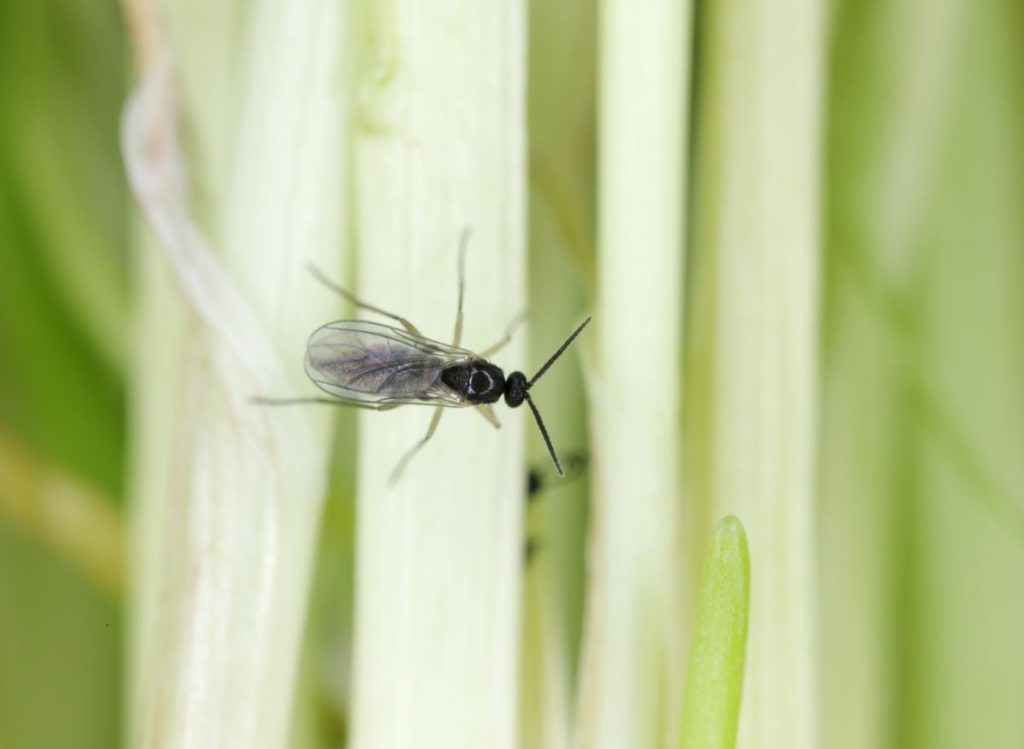
2- Root-Knot Nematodes
Root-knot nematodes (scientifically known as Meloidogyne spp.) are tiny worms that feed on the roots of potted plants, leading to stunted growth and reduced vigor. They form galls on the roots and severely damage the root system.
Root-knot nematodes are among the most common and destructive nematode pathogens because they can create some of the most dramatic symptoms and substantially reduce crop yields (Source: The American Phytopathological Society (APS))
- You can identify root-knot nematodes by the small, round bumps on the roots and the plant’s overall appearance, which looks weak and unthrifty.
- To prevent root-knot nematodes, ensure the soil is well-draining, and avoid over-fertilizing the plant. You can also soak the soil with beneficial nematodes, which are harmless to the plants but will destroy the root-knot nematodes.
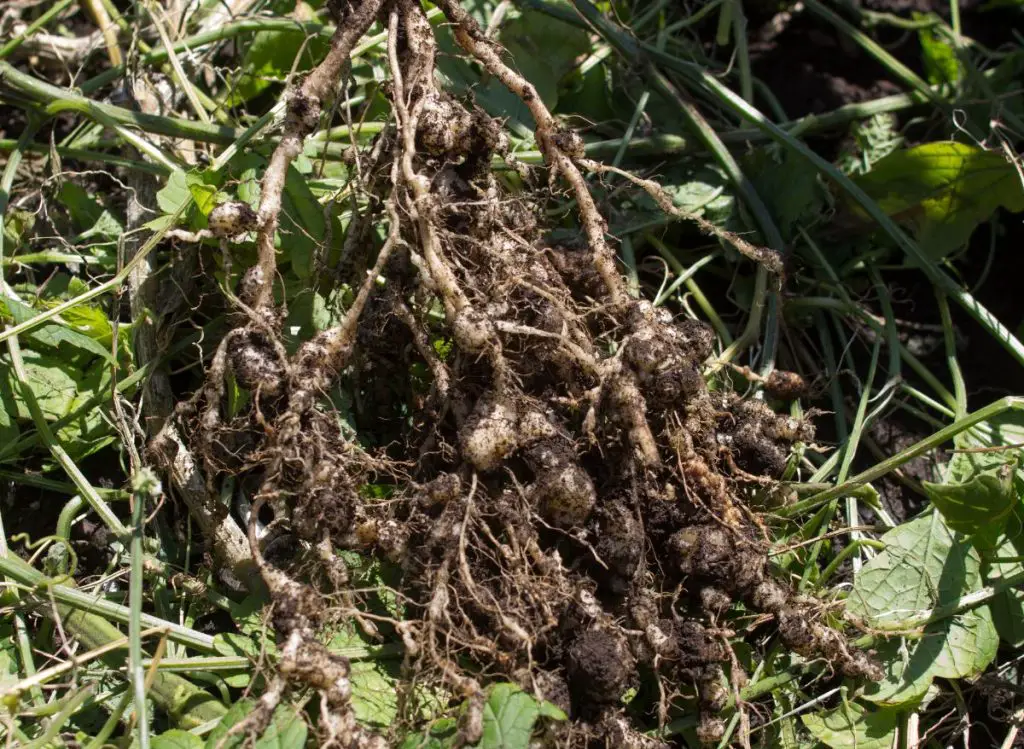
3- Cutworms
Cutworms earn their name because they generally cut down young plants as they feed on stems. They are typically found at the base of potted plants. They cut the plant’s stem at ground level, causing it to wilt and die.
- You can identify cutworms by looking for small, brownish-gray caterpillars in the soil or under debris near the plant.
- Generally, cutworms look similar in general appearance. They appear smooth with very few hairs and are about two inches (5 cm) when fully grown. They commonly curl into a tight ‘C’ shape when disturbed (Source: University of Minnesota)
- To prevent cutworms, keep the soil surface free of debris and remove any dead plant material from the pot. You can also handpick the caterpillars or sprinkle a pesticide that targets cutworms.
- Commonly, the best way to get rid of cutworms is by physically removing them.
- If you wonder how to get rid of cutworms, I wrote a whole article with simple and effective steps.
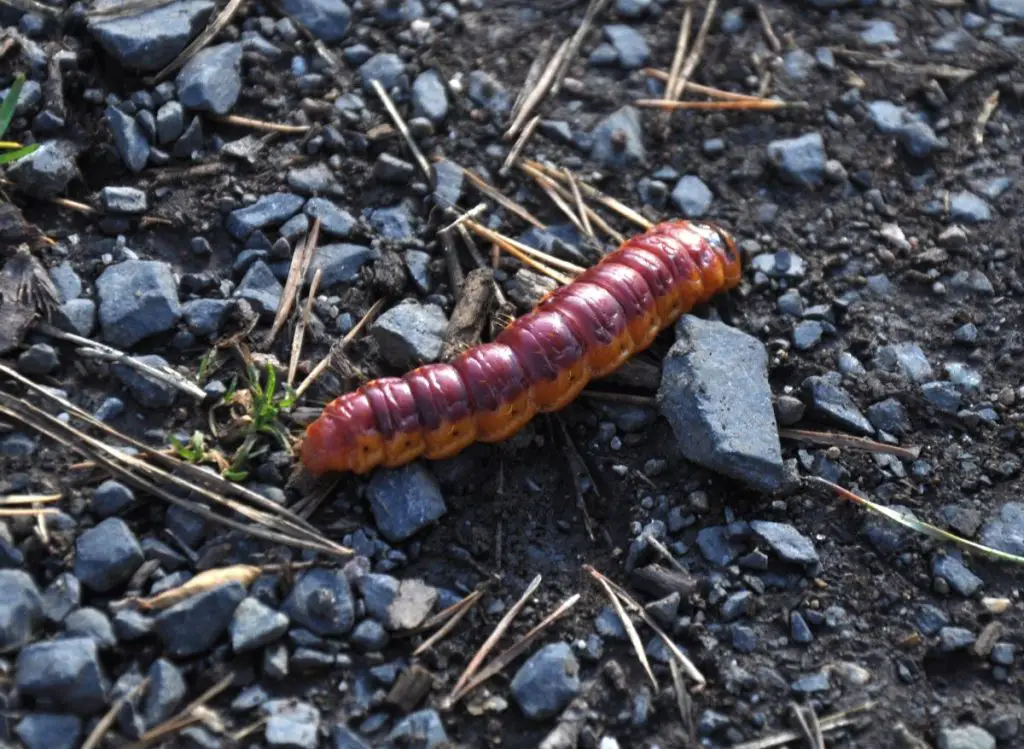
4- Vine Weevils
The black vine weevil or taxus weevil (scientifically known as Otiorhynchus sulcatus) typically feeds on decorative plants. It is most destructive in its larval stage to yew, hemlock, rhododendron, impatiens, asters, and cyclamens (Source: Missouri Botanical Garden)
Black vine weevil feed on the leaves of potted plants, causing them to have notches or holes. The larvae feed on the roots, leading to a weakened root system.
- You can identify vine weevils by looking for notched leaves or black beetles on the plant or the soil surface.
- To prevent vine weevils, keep the soil surface clean, avoid over-fertilizing the plant, and choose resistant plant varieties. You can also use nematodes or insecticides to control vine weevils.
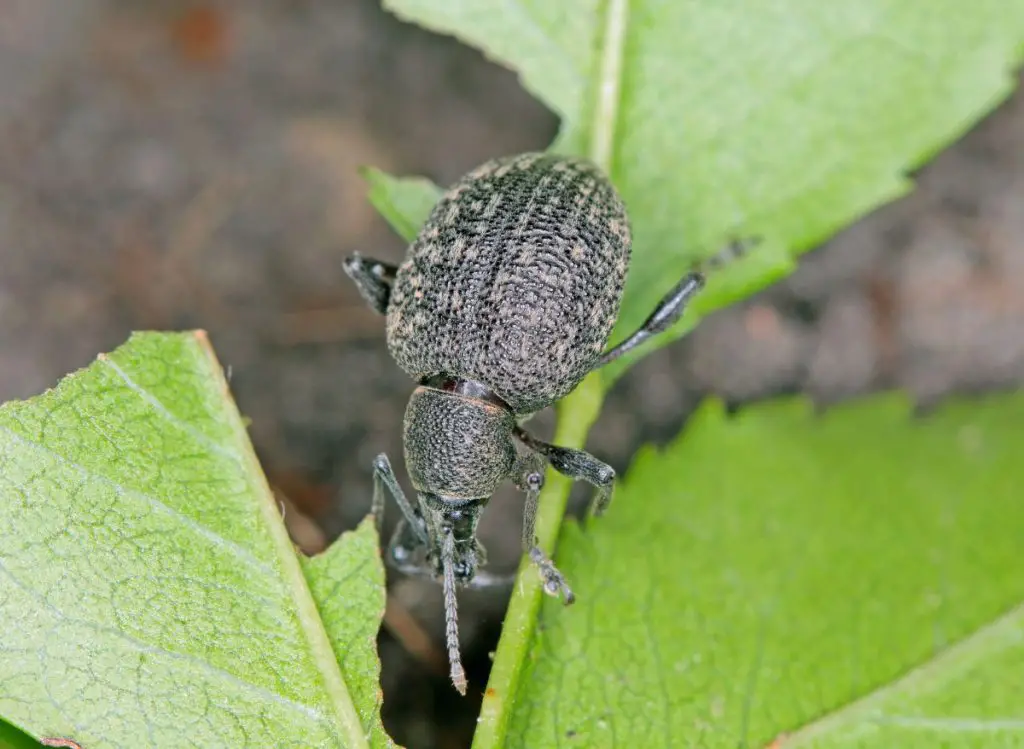
5- Earthworms
Earthworms are another type of worm that can inhabit your potted plants’ soil. They are also excellent for soil health, breaking down soil and enriching it with nutrients.
However, if you see large earthworms surfacing in your potted plants, it may indicate poor drainage and could drown the roots. You can remove the worm and top up the soil with perlite or other drainage-boosting materials.
- You can identify Earthworms by spotting the worms near the surface of the soil or seeing raised bumps on the soil surface.
- To prevent earthworms from damaging potted plants, avoid using the soil from the garden, which can contain earthworms, and use potting soil instead.
If you want to explore practical ways to control Earthworms in your garden soil, I wrote a whole article that I encourage you to read.
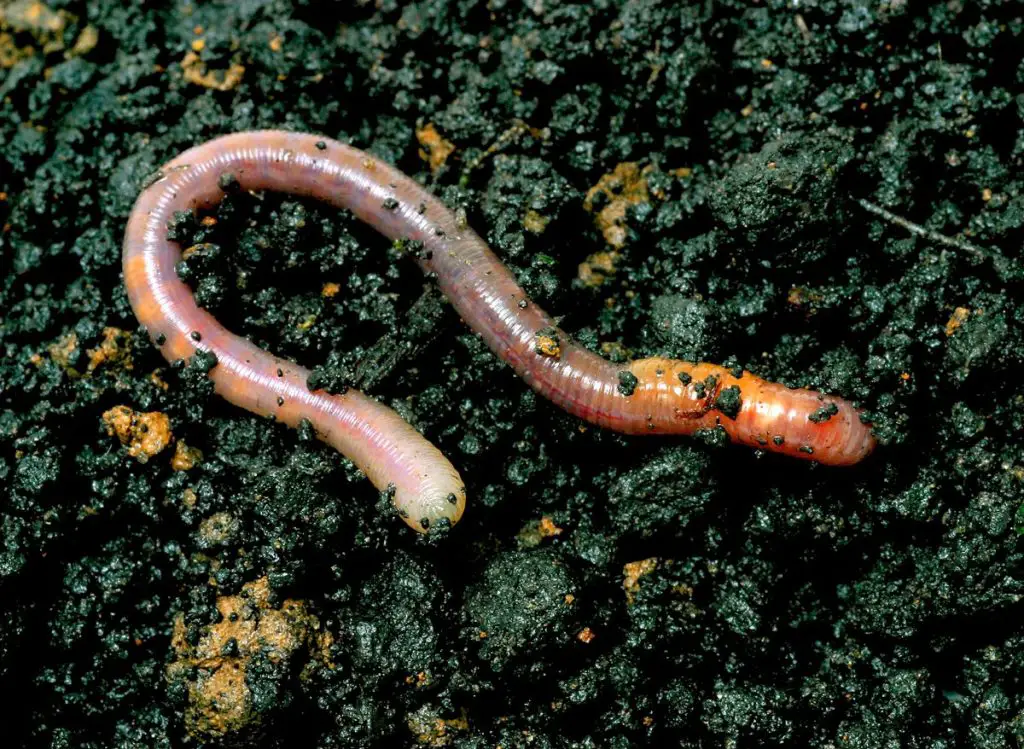
6- Root Mealybugs
Root mealybugs are tiny white bugs that live within the soil and feed on your plant’s root system. Also, root mealybugs can cause significant damage to your plant, stunting growth or even killing it if left unchecked.
Root mealybugs feed on ornamental plants’ roots, including Achillea, Arctostaphylos, African violet, bamboo, Bermuda grass, and chrysanthemum. You may notice a powdery white substance on the leaves or soil surface, a sign of mealybugs.
- To prevent an infestation, inspect your plants before buying them, and isolate any suspicious ones for a few weeks.
- To control root mealybugs, you can use a systemic insecticide or repot your plant in fresh soil.
James Baker, Professor Emeritus from North Carolina University, recommends treating infested plants with imidacloprid or systemic insecticide. You can also place your houseplants outdoors for treatment when using insecticides.

7- Red Wiggler Worms
Red wiggler worms (scientifically called Eisenia foetida), also known as compost worms, are an excellent addition to your potted plants’ soil. These worms speed up the decomposition process, breaking down organic matter to release nutrients for your plants.
You may spot red wiggler worms wriggling in your soil, and they are harmless to your plants. In fact, they are beneficial and contribute to plant growth.
- You can identify red wiggler worms: Worm castings resemble that of the soil from the ground. It feels crispy to the touch and dark brown in shade, also called black topsoil).
- Red Wiggler Worms offer tremendous benefits for potted plants. In contrast to chemical fertilizers, red wiggler worms provide nutrients to the plants instead of breaking nutrients down through a particular time (chemical fertilizers)
In addition, red wiggler worms can help improve the soil’s structure, help improve its water retention ability, and keep your soil healthy and free of potential diseases.
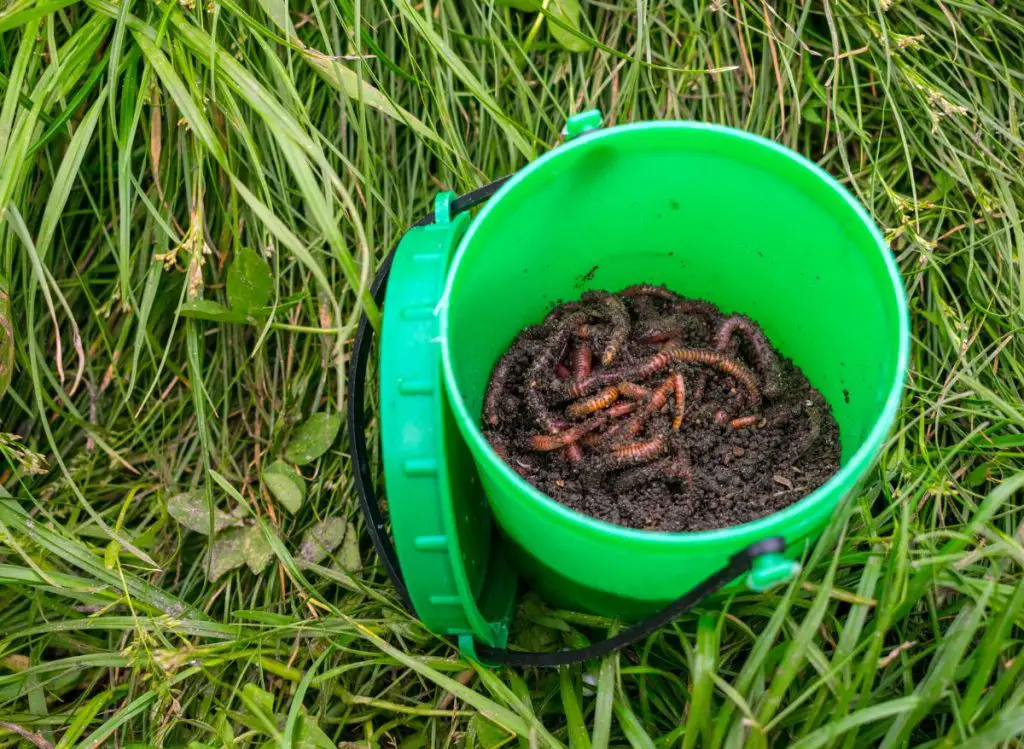
8- Caterpillars
Caterpillars are the larvae stage of moths and butterflies and occasional potted plant pests. They can damage your plant by eating away at leaves, stems, or flowers.
- To identify caterpillar damage, look for ragged edges, holes, or missing parts on the leaves or stems.
- To control caterpillars, remove the larvae manually (destroy caterpillars and eggs) or introduce natural predators such as birds or praying mantises. As a last resort, you can also use insecticidal sprays for severe infestations.
- If your houseplants are placed outside, and you still notice additional caterpillars, it is recommended to spray them with neem oil extract for one to two weeks (Source: Clemson University)
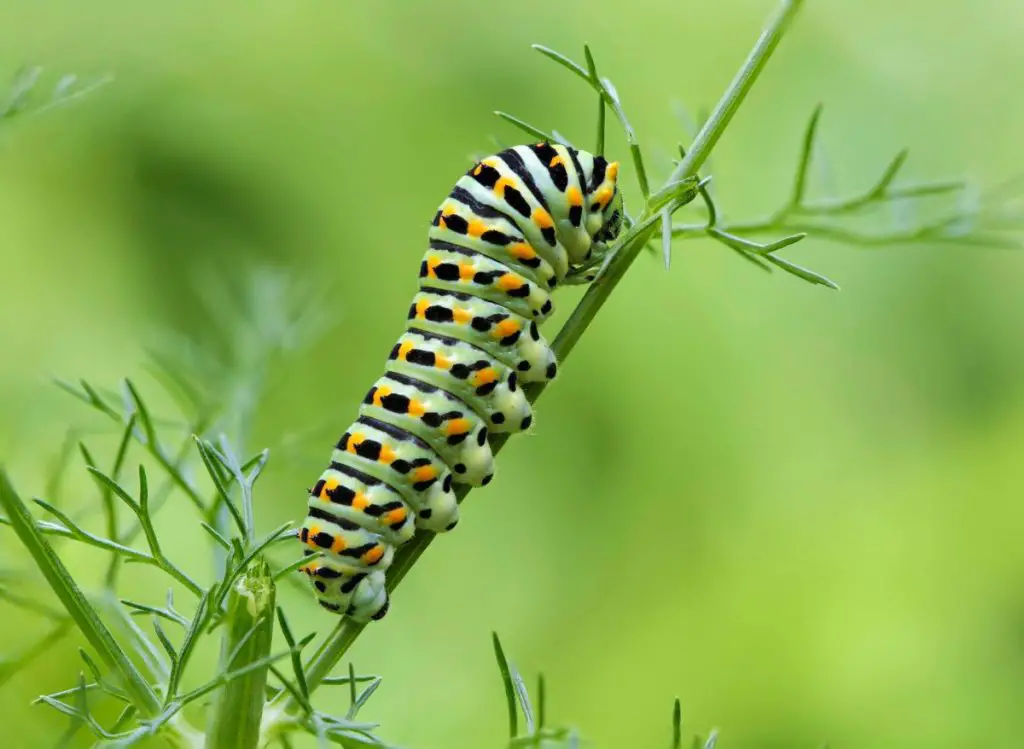
9- Grub Worms
Grub worms, commonly known as June bugs (scientifically called Phyllophaga), are the larvae of beetles in the Scarabaeidae family.
Because grubworms feed on plant roots, they can severely threaten potted plants because they will probably eat the roots. Grub worms generally have a brown head capsule and a cream body color. They are soft, making them easy to be crushed with your fingers. Grubworms can reach an inch (2.54 cm) in length when fully grown.
- To identify Grub worms, they come with white, bloated bodies shaped like a “C.” They have six legs.
- You can get rid of grub worms by:
- Remove rid of grub from the soil
- Apply beneficial nematodes
- Scrub your container thoroughly using a solution of 9/10 water to 1/10 household bleach.
- Completely replace the soil in the container and re-pot the plant.
- Replace your potting regularly, about once each year, to prevent overwintering grubs.
Experts gardeners from the University of California recommend sifting through the pot’s soil to remove (and discard) them and then repot the plants into fresh soil.
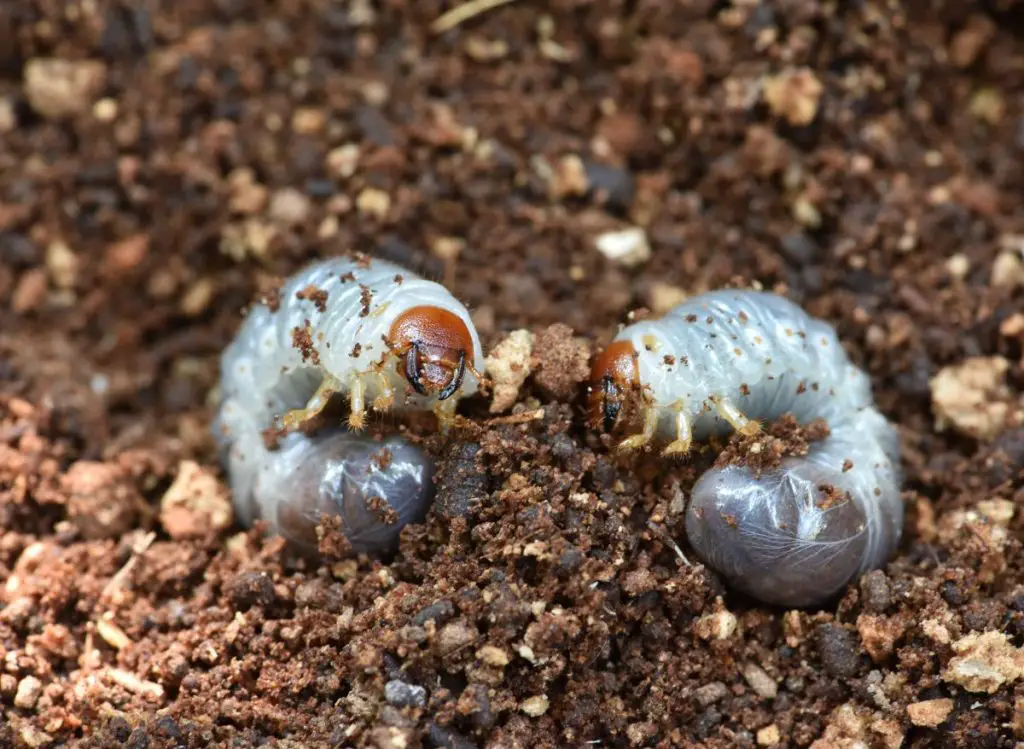
What to read next:
- How to Control Earthworms in Your Garden Soil: Here’s How!
- How to Get Rid of Worms on Strawberry Plants (7 Effective natural ways!)
- Identifying and Treating Common Pests and Diseases for Strawberry Plants.
Wrapping Up
I believe that knowing what types of worms are commonly found in potted plants can help you prevent and eliminate them. Also, regularly inspecting your potted plants for worms is essential to maintain plant health.
In case of an infestation, take appropriate measures to protect your plants from these pests. While some worms can be beneficial for soil health, others can harm the plant’s growth. Treat your potted plants with care, and they will reward you with beautiful blooms and healthy growth. Happy gardening!
I encourage you to apply the right measures to control the type of worm causing damage to your potted plants.

